DIGNITY DENIED OP-ED
Eight years later, bodies of Lily Mine disaster victims still underground — where’s the ubuntu?
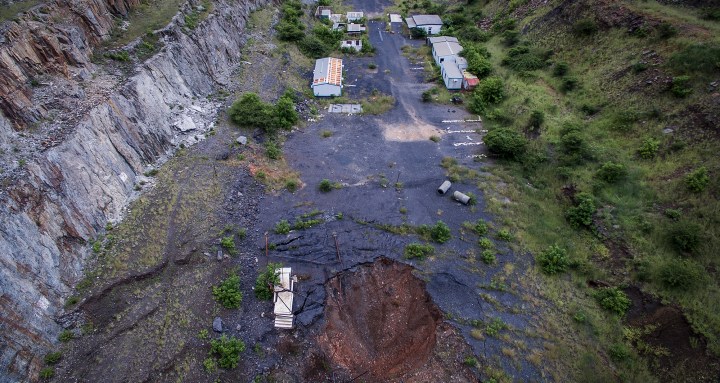
Had the victims of the Lily Mine disaster been the CEO, the director-general, minister of mineral resources and energy or the President, would their remains still be underground today?
Eight years ago, the Lily Mine disaster happened. Three people – Pretty Nkambule, Solomon Nyirenda and Yvonne Mnisi – were in a container office at the entrance to the mine. The ground opened up and the container disappeared into the gaping hole that appeared as a result of the underground collapse. Tons of rock and soil covered the unintended coffin in which the terrified employees spent their last moments alive – it is said to be about 70m below the surface.
Eight years later, the container is still underground. The bodies of the three employees are in the container, inaccessible to their loved ones who would like to bury them with dignity and to find personal closure. It is true that there was an initial attempt to reach the container, but the process was stopped because it was deemed to be too dangerous. Since then, there appears to have been no particular urgency in dealing with the issue, not from the government, the business sector or the business rescue practitioners. They have their reasons, of course: it’s too risky, it’s too expensive, the business rescue process must be completed, a new owner must be found, accountability must be determined.
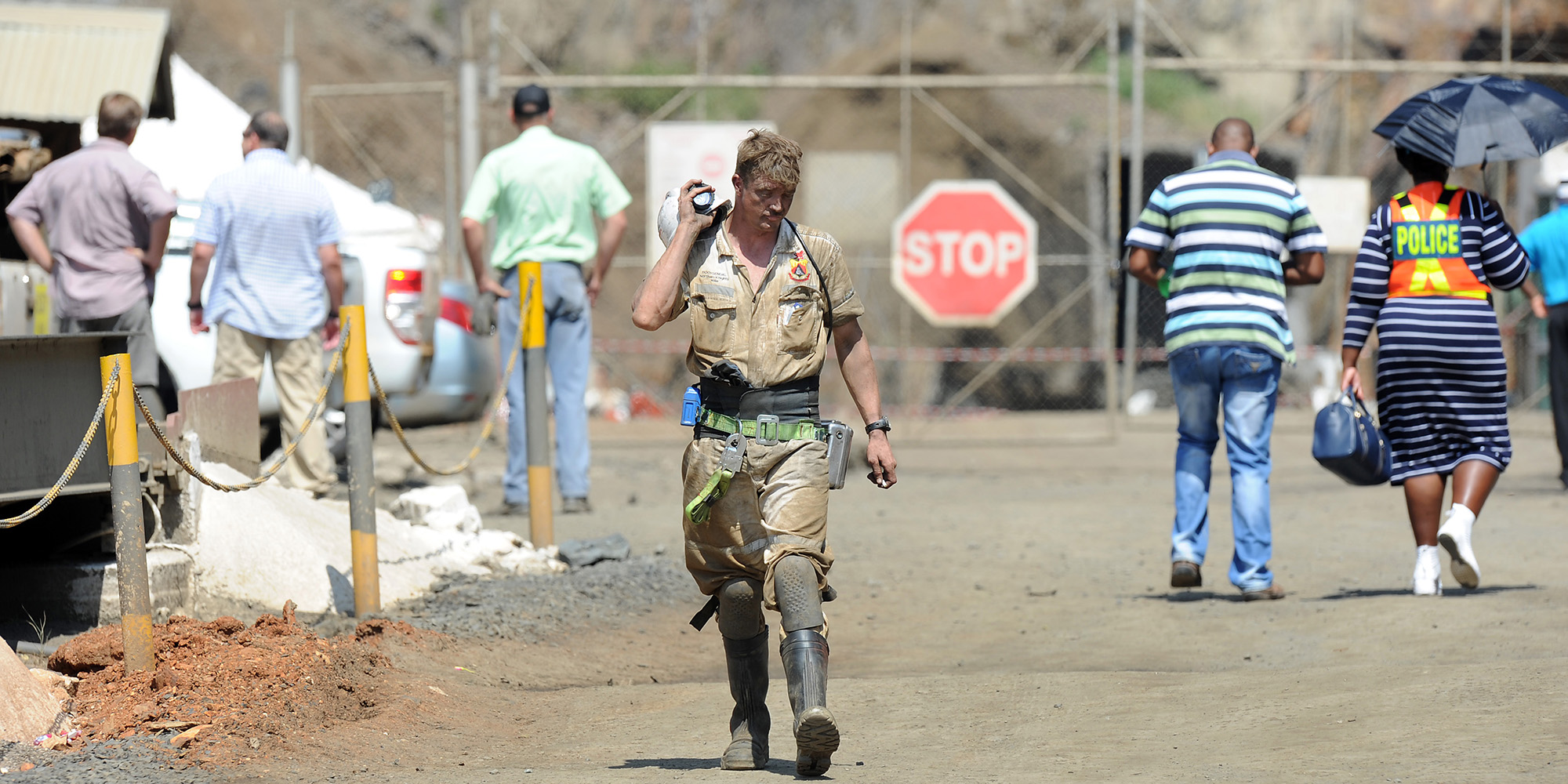
Search-and-rescue teams at Lily Mine following the collapse on 13 February 2016. (Photo: Gallo Images / Beeld / Felix Dlangamandla)
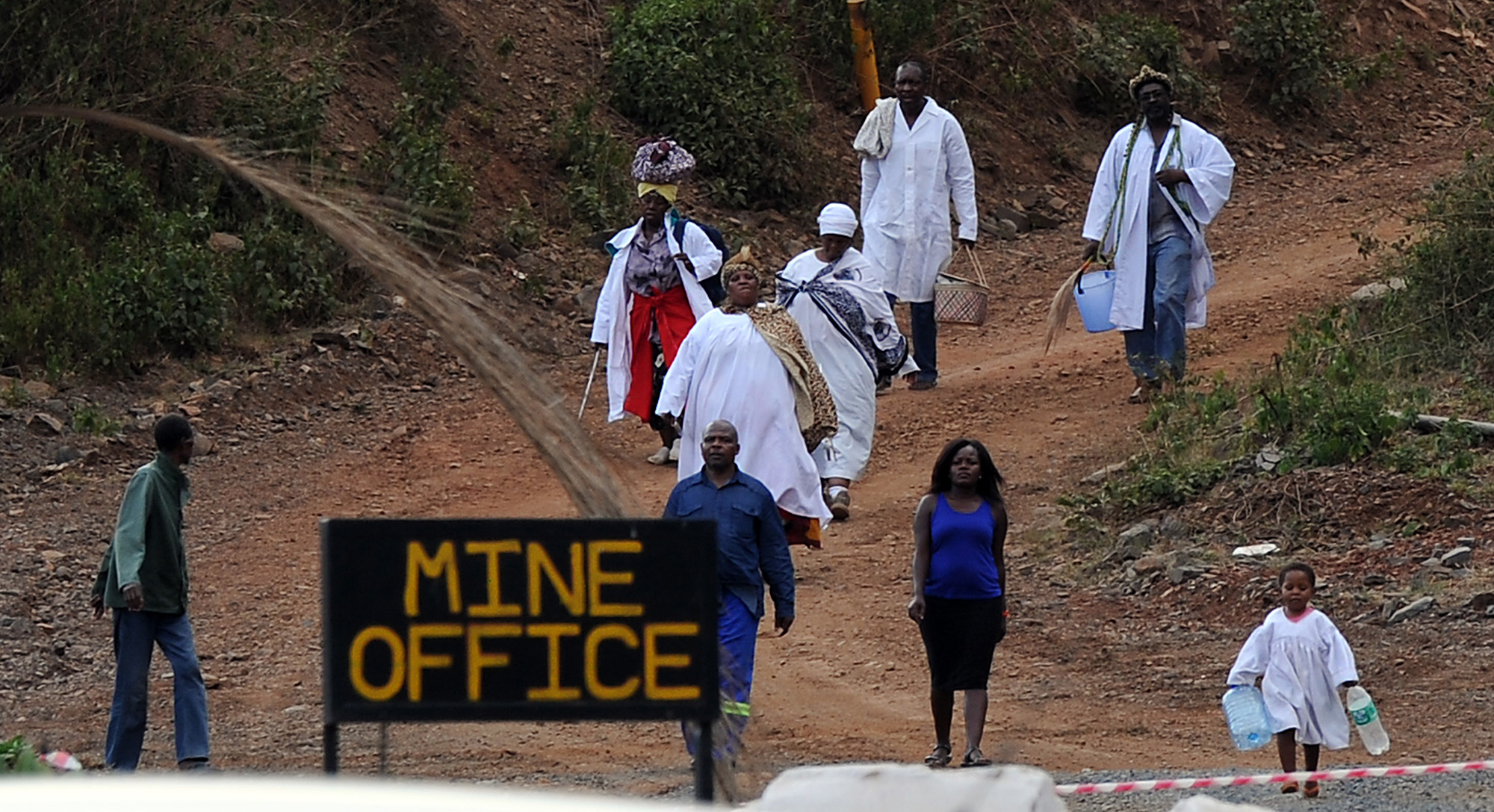
Sangomas leave Lily Mine after performing a ritual with some of the family members of the three mine workers who were still trapped underground on 17 February 2016. (Photo: Gallo Images / Beeld / Felix Dlangamandla)
I am a citizen observing the situation from afar. I have no connection with the mining industry. I am an atheist with no personal commitment to a creator, to ancestors or burial rituals. Nevertheless, I am appalled that, as a country, we have not been able to come together to help the families of those still trapped in what surely cannot be accepted as being their final resting place.
I cannot but wonder what would have happened had it been the CEO of the company, the director-general or minister of mineral resources and energy, the President perhaps, visiting the mine and greeting the employees in the container when the disaster occurred. Would their remains still be underground today? Would the same reasons for not excavating the container for eight years have applied had they been among the victims trapped in it? Unlikely.
There would have been hours and days and weeks of wall-to-wall television and radio coverage of all of the resources of the state, bolstered by support from the business sector, using whatever means necessary, whatever the cost, to get to the container and recover the remains of those inside. Of course, they may not have succeeded even then. But at least the nation – and the families of whoever was inside when the container was buried – would have known that everything humanly possible had been done to retrieve the bodies.

On 5 February 2016, Lily Mine in Mpumalanga collapsed, trapping three mine workers underground. Almost eight years later, their families, former colleagues and residents are still seeking answers and justice. (Image: Herman Mashaba / X)
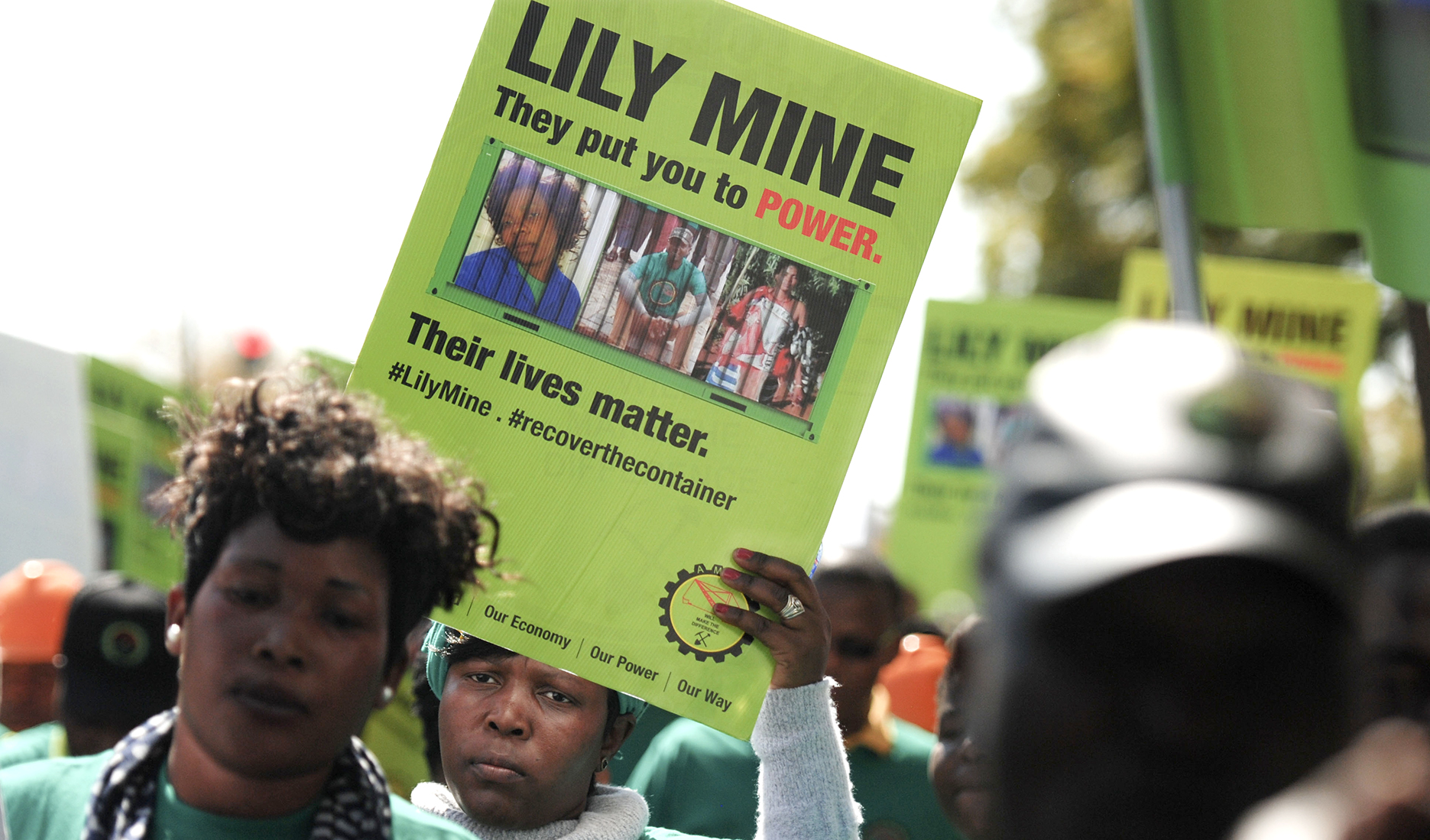
Association of Mineworkers and Construction Union members gather outside the Department of Mineral Resources offices in Pretoria during a protest for the three mine workers still trapped at Lily Mine on 18 August 2016. (Photo: Gallo Images / Thapelo Maphakela)
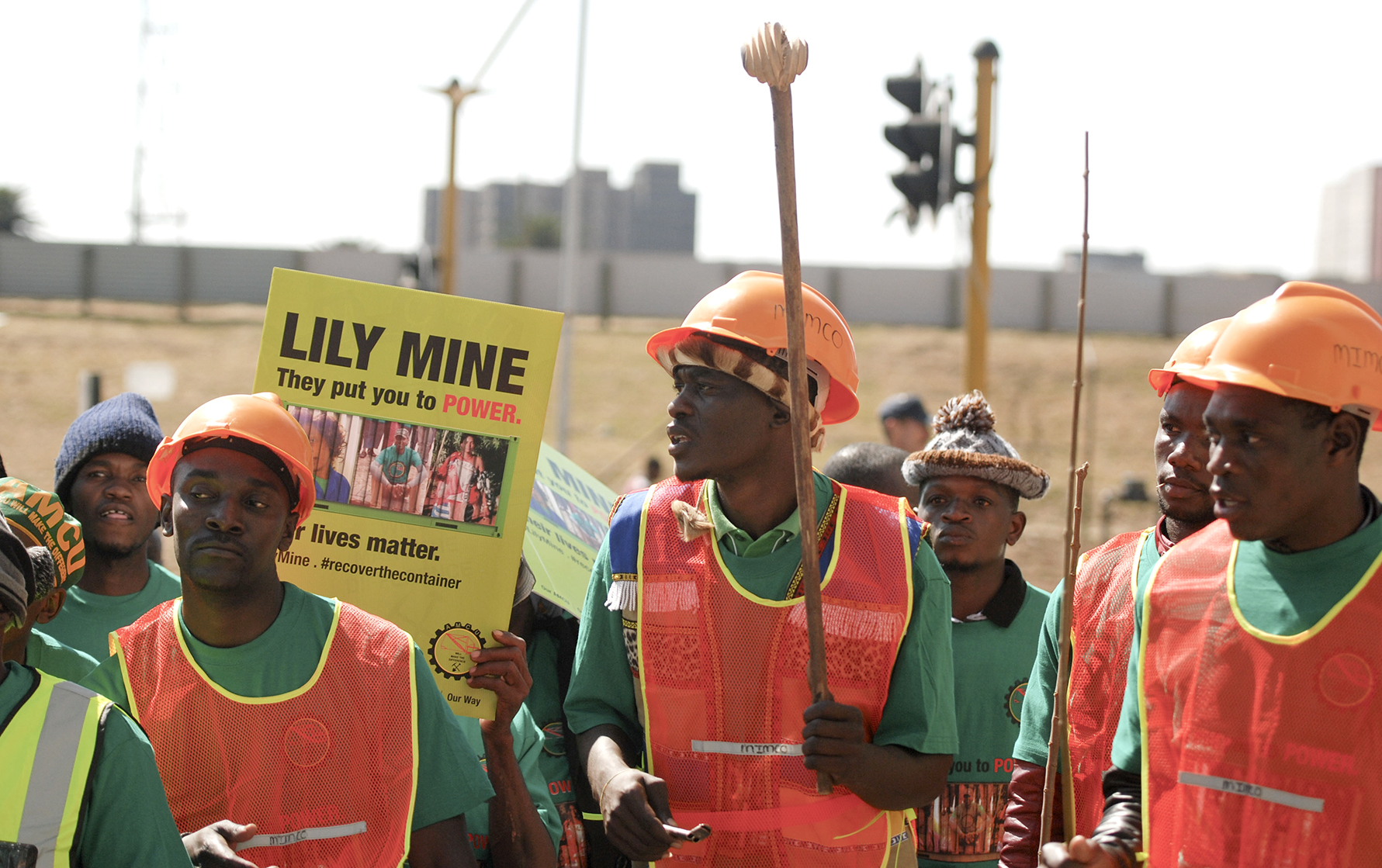
Association of Mineworkers and Construction Union members protest outside the Department of Mineral Resources offices in Pretoria on 198 August 2016 following the Lily Mine disaster on 5 February. (Photo: Gallo Images / Thapelo Maphakela)
But, as we know, there were no dignitaries in the container, no “important” people whose remains had to be recovered, no matter the effort, no matter the cost. They were just three workers in the wrong place at the wrong time, three workers whose status didn’t require a national effort to reach them, no matter the effort, no matter the cost.
And yet we pride ourselves on our “ubuntu”. We say we are a caring nation.
If money is the problem, why couldn’t the likes of Patrice Motsepe and/or the Royal Bafokeng Nation and/or the Oppenheimers and/or Implats and/or the many others who have made their money out of mining agree to foot the bill for getting the container out of the ground? If risk is the issue, why couldn’t the best minds in the country and the world – engineers and others backed by the funding provided by the mining sector et al – work out what was needed to get it out with minimum risk?
Read more in Daily Maverick: ‘Mr X’s’ testimony at Lily Mine inquest paints chilling picture of illegal mining facilitated by employees
Read more in Daily Maverick: SAPS, DMRE and Lily Mine ‘all contributed to deaths’ in horror 2016 Mpumalanga collapse
Do the families really have to wait until the business rescue process is over, until there is a new owner, or until some other bureaucratic obstacle has been removed? Even if these are all dealt with, what guarantee do the families have that the container will ever be excavated? Or will there be another new excuse put forward? After all, in one of the findings in her “scathing inquest judgment … (in October 2023) … magistrate Annemarie van der Merwe said the mine was profit-driven” (Sowetan, 20 October 2023). Will it be that “profit motive” that finally determines whether getting the container out is financially viable or justified?
To the families, their relatives in the container are as important as the CEO would have been to the company, the DG and minister to the department, the President to the country. Surely we have the capacity within us to recognise that and to address this issue without further excuses and further delay? DM
Maurice Smithers is an advocate for alcohol harm reduction as a public health, social justice and human rights issue.

















 Become an Insider
Become an Insider
Comments - Please login in order to comment.